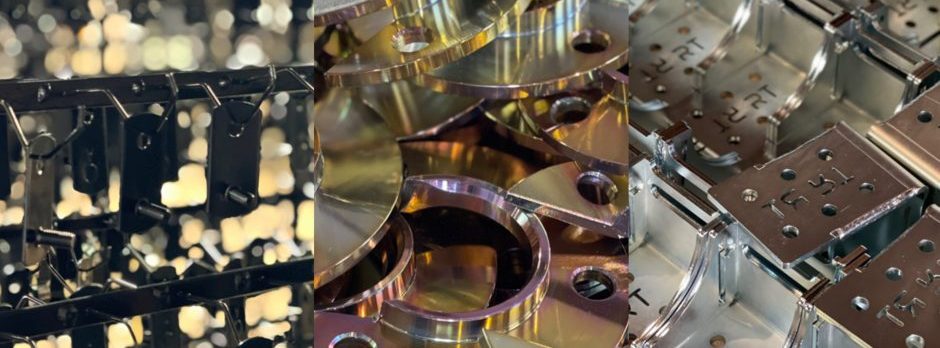What are electroplaters talking about when they are using terms like ‘passivate’ or ‘chromate’?
Passivating is part of the electroplating process and for zinc plating this has traditionally been performed using chromate based solutions. The passivate, or more correctly termed ‘chromate’ solution, is used after the plating tank to provide a sealing layer over the zinc layer.
Why?
Passivating zinc extends the corrosion resistance of zinc plated parts significantly and can also be used to add a particular colour or appearance. The two common colours are clear/silver and gold/yellow. Darker colours ranging from browns, to greens, to blacks are also possible but not overly popular with the major markets.
Types
Chromates are usually grouped in terms of the primary active element Chromium (Cr), which obviously is where chromates derive their name from. Chromium was one of the first elements added to create (accidentally) ‘stainless steels’ providing steel with increased corrosion protection. It is the ability of Chromium to oxidise quickly delaying underlying metals from corroding that makes the element so desirable.
Trivalent Chromates
This a more recent development in passivation solution technology containing Cr(III), following the demand from the automotive industry for all materials to be ‘hexavalent chrome free’. One of the reasons you’ll never see chrome plated bumper bars and fittings on your car anymore, as the solution contained Cr(IV) as its primary element. Trivalent chromate solutions are also classed as thick or thin film. Thick film trivalents were developed to give comparable corrosion resistance to the hexavalent chromates used in zinc passivation.
Hexavalent Chromates
This is the traditional passivation solution containing Cr(IV) as popularized by chrome electroplating providing excellent corrosion protection in thin film form and even better as a thick film. Thin film versions also give excellent colour and appearance without appearing iridescent or streaky. Unfortunately hexavalent chromates are not as popular as once before due to environmental and chronic health concerns. Advances in trivalent chromates has seen comparable corrosion resistance and appearance requirements being met, but not without significant increases in raw material and maintenance costs.
Sodium Dichromate
Quenching solutions used after galvanizing usually refer to the solution as a mild or weak ‘sodium dichromate’ solution. This process is used to cool the steel and zinc down from 450 °C. A zinc chromate layer gives the underlying zinc some short-term protection before zinc corrosion takes place forming zinc oxide/hydroxide (white rust). As to a solutions trivalent or hexavalent active chromium content, you would be best advised to contact your local galvanizer.
